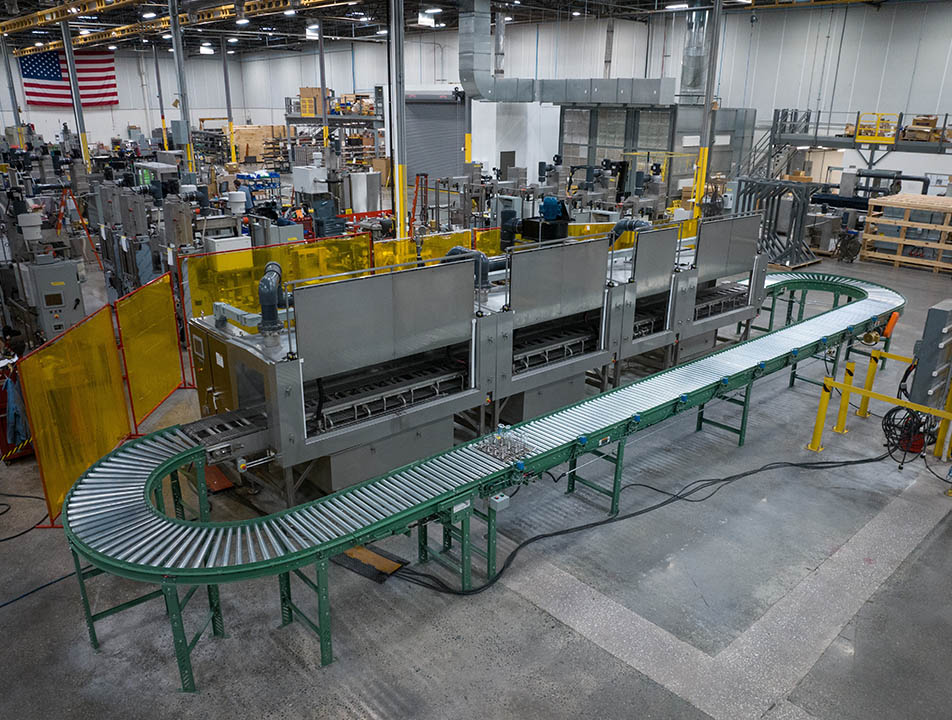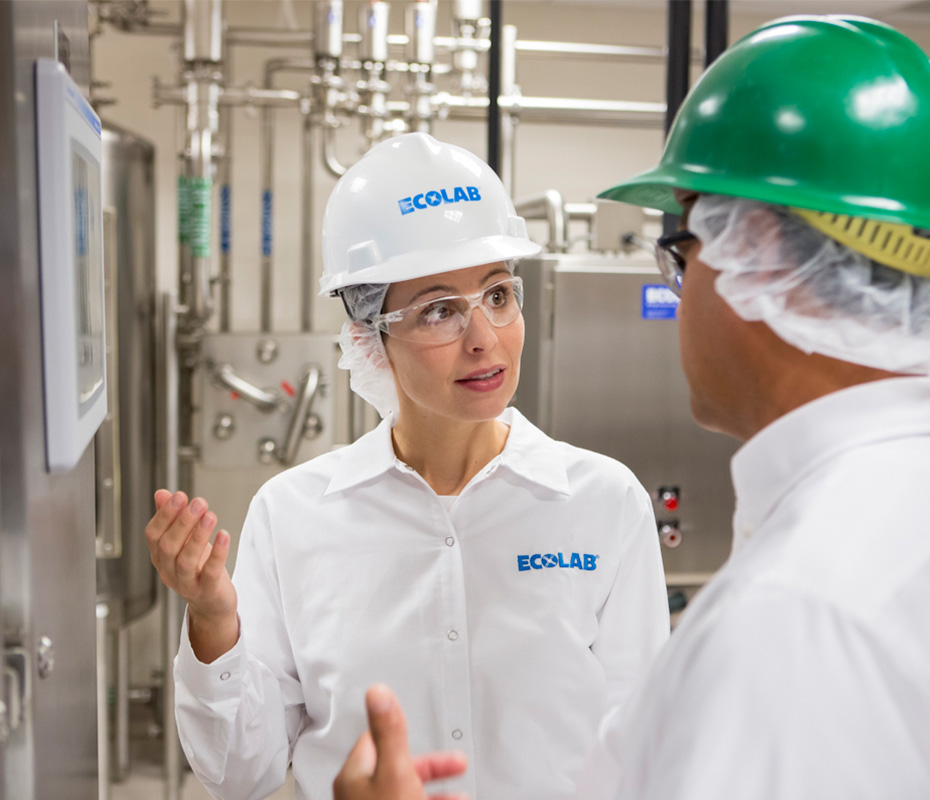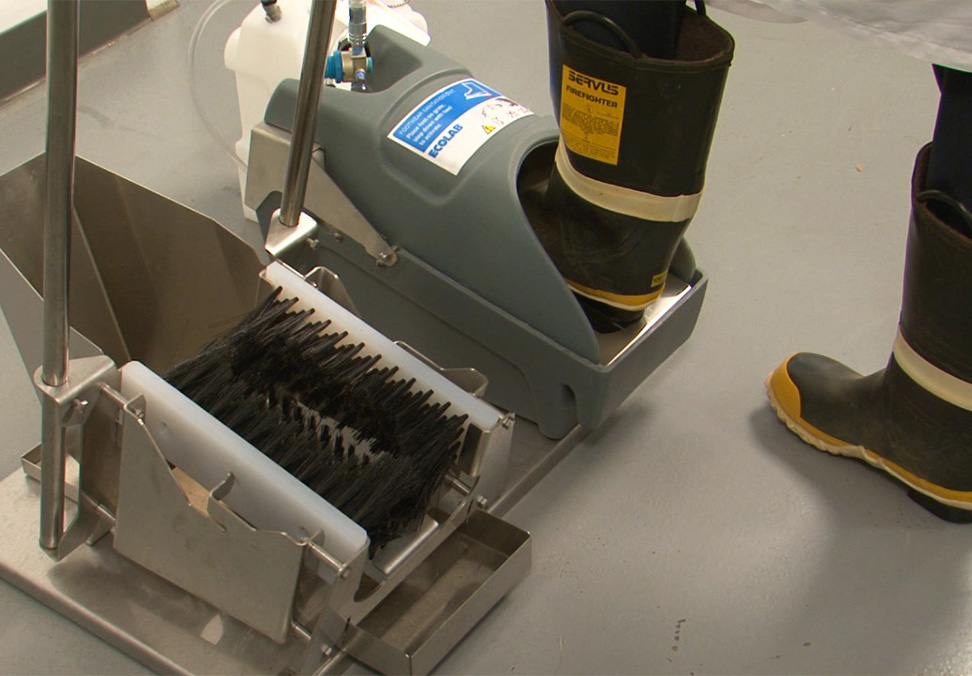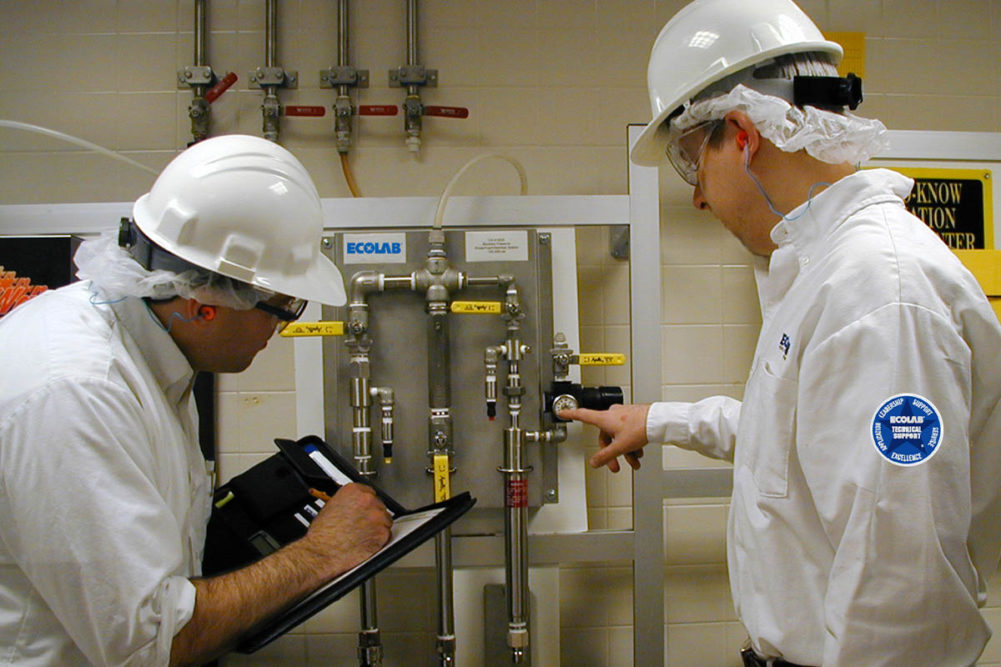This article was published in the January 2024 issue of Pet Food Processing. Read it and other articles from this issue in our January digital edition.
Keeping a pet food processing facility clean is essential to maintaining top food safety standards in manufacturing; however, there are a host of challenges that pet food environments present when it comes to sanitation, so it’s vital companies choose the correct equipment to help processors complete their necessary tasks. Maintaining sanitation standards is one of the key aspects to avoiding recalls or contamination of end products, for both pet food and food for human consumption.
Nathan Mirdamadi, senior food safety specialist for Harahan, La.-based Commercial Food Sanitation, noted the focus on keeping pathogens out of pet food has never been higher.
“If you install equipment that is very difficult to clean, you are setting yourself up for failure,” said Nathan Mirdamadi, Commercial Food Sanitation.
“Ultimately, it has to start with an appreciation for hygienic design,” he said. “If you install equipment that is very difficult to clean, you are setting yourself up for failure. Unfortunately, this is a step that is not given enough thought before something is fabricated and installed.”
Jeremey Alder, technical hotline leader for Saint Paul, Minn.-based Ecolab, noted delivering a food-safe product is table stakes, and pet food manufacturers are going to be hurting if they regularly throw out contaminated products or if contaminated products are going bad on the shelf.
“A solid cleaning and sanitation program helps ensure that the money you invest in producing a product actually comes through in the form of a product that maintains its quality long enough to be sold,” he said. “Everyone’s always looking for a magic bullet to instantly make facility cleaning way faster and easier, but the truth is, facility cleaning comes down to the tried-and-true methods we’ve been following for decades.”
Step one is developing a master sanitation program that’s validated for the product, the process, the equipment and the environment. Then, it’s about making sure that the program is followed as written — and routinely evaluated and adapted to address any changes or emerging issues.

Better Engineering’s sanitary conveyor line features vertical doors to give operators full access to the inside of the machine for easy cleaning and maintenance.
|Tom Bako, director of business development for BAK Food Equipment, Burr Ridge, Ill., noted there are many factors that come into play for optimal cleaning and sanitation processes.
“While we believe that a successful cleaning/sanitation program starts with keeping employees trained and ensuring compliance, using equipment with hygienic design elements is the next most important element for success,” he said. “Equipment used for processing fresh ingredients like meat, poultry, seafood, and even fruits and vegetables should have smooth, stainless-steel surfaces that make it easy for operators to clean after every batch.”
For example, Nowicki bowl cutters/choppers from BAK Food Equipment combine smooth, stainless-steel construction with hygienic geometry — meaning all flat, polished surfaces are inclined to 3° to maximize cleanability.
Mark Giganti, sales director of MIMASA USA, LLC, Elk Grove Village, Ill., noted more and more companies are implementing protocols, equipment and controls to prevent contamination and guarantee safety-clean environments.
“In a pet food facility, most of the byproducts are being transported in vats that arrive at the plant to be processed, so the correct cleaning and sanitation of the elements prevents bacteria growth and cross contamination through the plant and the process,” he said. “We manufacture solutions to guarantee the correct cleaning and sanitation of the vats; at the same time optimizing the use of water and energy.”
The complete cleaning process is monitored by software which controls these critical measurements to guarantee the equipment is delivering the desired result. The use of automatic reporting and correct management of the information related to the cleaning process will make any sanitation program more sustainable and efficient.
New and trusted solutions
Digital tools are changing the game in facility cleaning and sanitation — in pet food processing and virtually every type of manufacturing. For example, remote access and monitoring of cleaning and sanitation processes is becoming standard best practice.
“Facilities are investing in digital platforms, and the automation of equipment to talk to those digital platforms,” Alder said. “They’re getting completely unprecedented visibility across all their manufacturing processes, and the digital platforms give them the analytic tools to make sense of all that data. Most importantly, facilities are getting more and more savvy about how to put that visibility and analytics insight into action — they can monitor KPIs, see trending metrics, set limits and get automated alerts on risks — before they grow into full-blown food safety issues or recalls.”

Digital capabilities and monitoring systems throughout pet food processing environments allow processors to get automated alerts on risks before full-blown food safety issues arise.
|Better Engineering recently updated its sanitary conveyor line to have vertical doors to give operators full access to the inside of the machine for cleanout and maintenance.
“These systems are also designed to accommodate different levels of automation for high-volume applications, like bin flipping, bin stacking and pallet stacking,” said Ryan Hiss, vice president of sales for the Joppa, Md.-based company.
The company also rolled out a new product called Aqua Insights to address the traceability concerns for many pet food processors, especially with the increase in popularity of fresh and wet pet foods.
“Aqua Insights allows customers to record and track, in real-time, up to 50 different data points on a system,” Hiss said. “Tracking these critical running parameters will enable customers to identify trends and detect anomalies through intuitive dashboards and customizable visualizations. Aqua Insights informs end-users, allowing them to take proactive measures and prevent potential issues like cross-contamination.”
As strong proponents of automated processing equipment, BAK Food Equipment believes utilizing equipment with clean-in-place (CIP) functionality when possible is the easiest and most efficient way of ensuring equipment cleanliness and sanitation.
“Because CIP is automated, operators can rest assured that all surfaces that come into contact with food products are thoroughly cleaned and sanitized,” said Tom Bako, BAK Food Equipment.
“Although it’s not suitable for every operation or piece of equipment, CIP uses automation to clean all the interior surfaces of equipment without disassembly while controlling the amount of water and cleaning solution used,” Bako said. “Because CIP is automated, operators can rest assured that all surfaces that come into contact with food products are thoroughly cleaned and sanitized.”
For example, the Protech Automated Spiral Cooking, Smoking, Freezing System’s liquid drencher features CIP functionality. The liquid smoke/brine drencher can run cleaning solution with water to clear any liquid smoke or brine residue/buildup from pipes, valves, vessels and more.
Overcoming challenges
Aging facilities are likely the root of common sanitation challenges for many processors. The typical pet food manufacturing plant is often a bit older, and that means the infrastructure itself, as well as the processes and workflows, are a bit less conducive to modern sanitary design.
“One of the most current and important sanitation challenges is the control of procedures,” Giganti said. “More production processes in the food industry are monitored in real time in order to optimize times and identify deviations that may affect food safety. Sanitation operations can contribute to improving the overall sustainability of the production process, ensuring the correct use of equipment, labor and water.”

Sanitation isn’t only about large procedures; sometimes, small things such as providing boot scrubbers for employees to use as they go on and off the processing floor can make a huge difference.
|One of the most important tools a facility can have in its arsenal is a strong training program with consistent compliance.
“Whether or not a machine can clean itself doesn’t matter if operators aren’t trained on how to do so,” Bako said. “The equipment we carry is easy to operate, but if operators are unsure of when and how to perform cleaning operations, it’s all for naught.”
When to clean
Bako recommends that all of BAK’s equipment in any food operation is cleaned after every batch processed, and all employees should be trained on the proper cleaning process for all of the equipment in a facility.
“Additionally, tools used for processing each batch (e.g., buggies, pallets, smoke sticks, bins, etc.) should be cleaned and sanitized after each use,” he said.
Giganti agreed that a basic cleaning protocol must be implemented daily in any processing operation.
“Some operations need continuous intensive cleaning while others require a deep cleaning just at the end of the shift,” he said. “The optimization of sanitation procedures permit optimization in the use of equipment, labor and energy, making sure that the result of cleaning can be guaranteed throughout the entire facility.”
“One of the most current and important sanitation challenges is the control of procedures,” said Mark Giganti, MIMASA USA, LLC.
As for deep cleaning, while it brings up the dreaded term, “downtime,” it’s important to be absolutely certain that processors are doing everything they can to protect the consumer’s safety.
“The only term worse than ‘downtime’ is ‘recall,’” Bako said. “A proper deep cleaning of all food processing equipment should be regularly scheduled with maintenance at set intervals as dictated by the processes. Whether this operation can be performed as a CIP function on equipment or manually performed, deep cleaning and sanitizing equipment can stop bacteria growth before it spreads.”
Operations should also consider that not only does deep cleaning help avoid contamination, but it also helps ensure the longevity of equipment.
Alder noted that deep cleaning, also called periodic cleaning, should be based on the risk. That might mean periodic cleaning happens weekly, monthly, or even yearly, or by need.
“That periodic cleaning frequency should be supported by data and experience,” he said. “Bacterial counts from swab samples are an excellent way to track and support periodic cleaning frequencies. For example, the plant can set an upper limit of allowable bacteria from a piece of equipment. It can track counts on that piece of equipment until they exceed the allowable limit. The time it takes for a piece of equipment to exceed counts from a full breakdown and cleaning would be the interval or frequency chosen for periodic cleaning.”
As for cleaning intervals, this is often dependent on the type of product being processed. For operations processing stickier products that are more likely to start building up, deep cleaning will be necessary more regularly than those processing more liquid-based products.
Find more articles about the latest pet food processing technologies and best practices on our Equipment page.



